A lot of people assume that learning how to design a minimalist garden means stripping your outdoor space of warmth or character, but that couldn’t be further from the truth.
Minimalist garden ideas are, essentially, a series of intentional choices: favouring clean lines, a restrained palette, and simple, thoughtful planting is the secret to creating a space that feels calm, uncluttered, and quietly luxurious.
The best part? Whether you're working with a compact courtyard or a sprawling modern garden, this sleek and soothing style works beautifully in plots of any size – as long as you know how to make every element count.
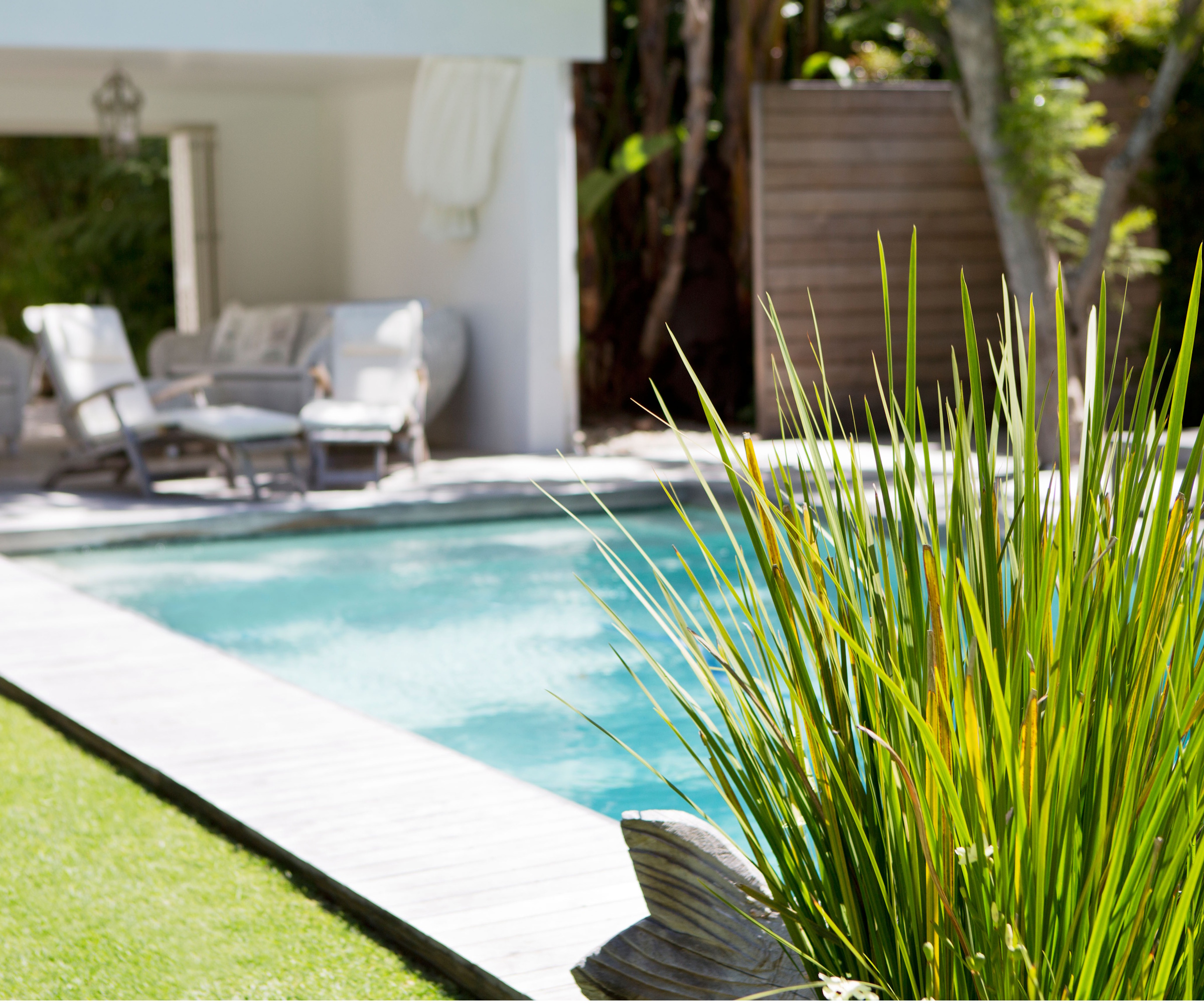
(Image credit: Tony Tallec via Alamy)
If you're keen to learn how to design a minimalist garden, it's best to 'think of it much the same as a minimalism in a home; calm, mess free, every item has an intentional place with clean lines and a soft colour palette,' says Ellen Mary Webster, author and professional gardener.
Shireen Zia – an award-winning designer and principal of EcoGardensLandscape Design, LLC – agrees, adding that a minimalist garden also demands a 'restrained plant palette, typically three to five varieties'.
'Sculptural trees provide structure and focal interest, while the overall design embraces a natural, effortless look that requires little to no maintenance to stay beautiful year-round,' she says.
While knowing how to commission a garden designer will help you to achieve this, you can also design a minimalist garden yourself, albeit with a few tips and tricks from the experts, of course.
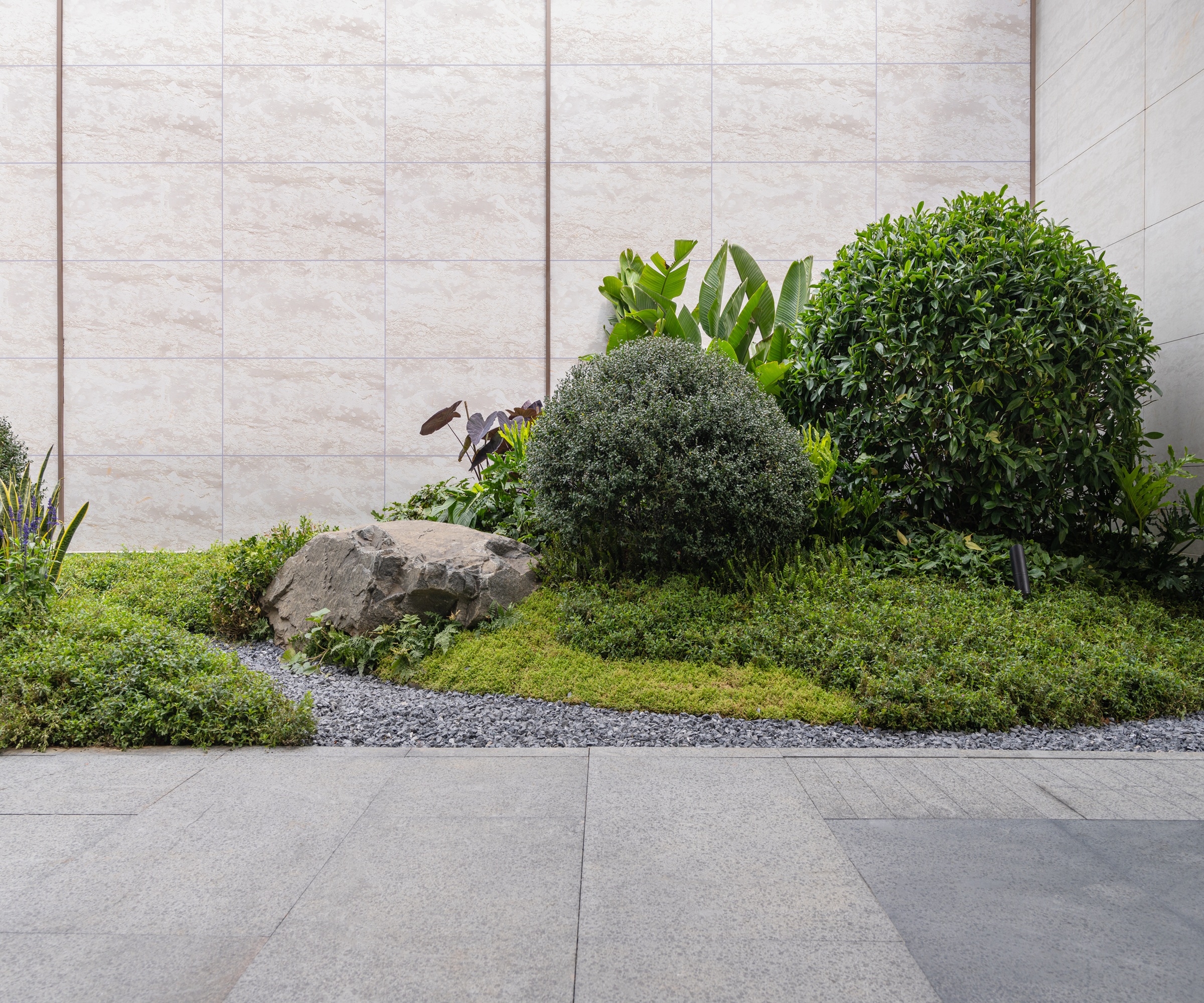
(Image credit: Getty Images/ zhihao)
The first thing to remember when learning how to design a minimalist garden is this: keep your color palette on the smaller side.
'Sticking to a specific color palette can help maintain a minimalist aesthetic. For example, pairing green, blue, and white plants with similar growing requirements can create a cohesive look,' says Alexander Betz, landscape designer and founder of Plant by Number.
Linda Vater, garden design expert on behalf of Southern Living® Plant Collection, agrees, noting that 'you can create a trendy 'green washed' look by layering all-green plants in a variety of heights and textures, or select a single bloom color, such as white'.
'One additional benefit of white blooms is that some varieties will appeal to night pollinators and catch the last light of the day, extending the visual appeal of your moon garden into the twilight hours,' she continues.
Try incorporating your planters into this, too. For example, with a collection of terracotta pots (like these from Amazon).
when it comes to selecting an accent color for your minimalist garden, Linda urges you not to forget about foliage. 'For example, some variegated shrub varieties like Suntastic™ ‘Radiance’ Abelia offer white hues in their leaves, reflecting and furthering the visual impact of nearby white blooms,' she says promisingly.

Alexander Betz is the CEO and founder of Plant By Number. As a professional landscaper early in his career in a new industry, Alex recognized the need for a more efficient planting method. Plant By Number takes the same design files used for traditional plantings, scales them, and prints them directly onto landscape fabric, a staple in the industry.
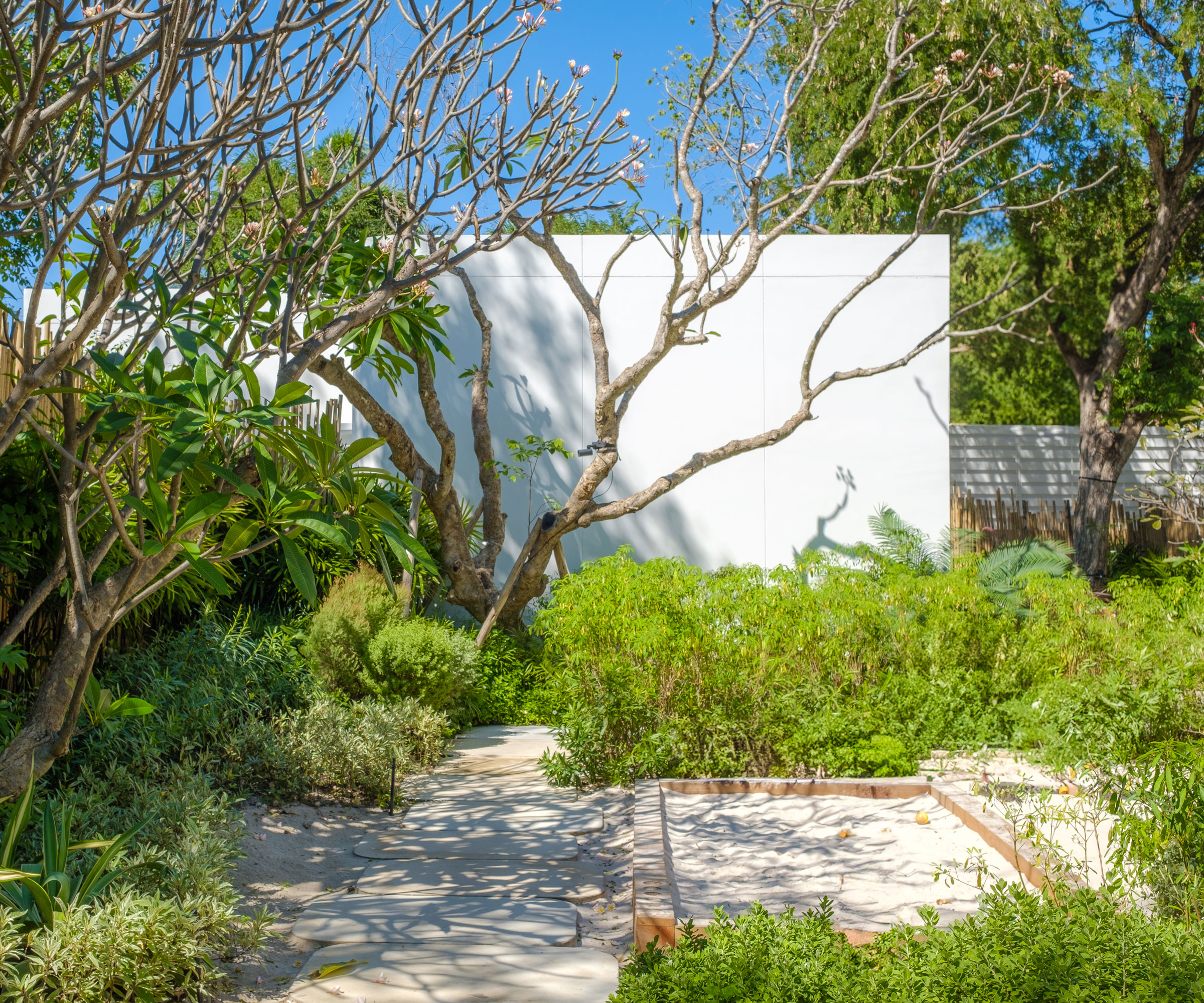
(Image credit: Dulyanut Swdp/Getty Images)
Another top tip for when you come to design your own minimalist garden? Keep it consistent when it comes to materials, whether that's for furniture, patios, rock garden ideas, or gravel garden ideas.
'Ideally, you should only use a maximum of three materials to keep the design cohesive, clean and sharp,' advises Ellen Mary.
'A good combination, depending on your space and preference are concrete, wood and shingle. If you add in another material to the mix, this will start to overcrowd the space visually so keep it simple.'

Ellen Mary is an experienced horticulturist, author and wellness advocate, and has appeared on TV in the USA and the UK. She has also spoken at shows around the world for many years, including BBC Gardeners World Live and RHS Hampton Court to name a few, and as a copywriter has articles published in many magazines, including Amateur Gardening Magazine and Grow Your Own.
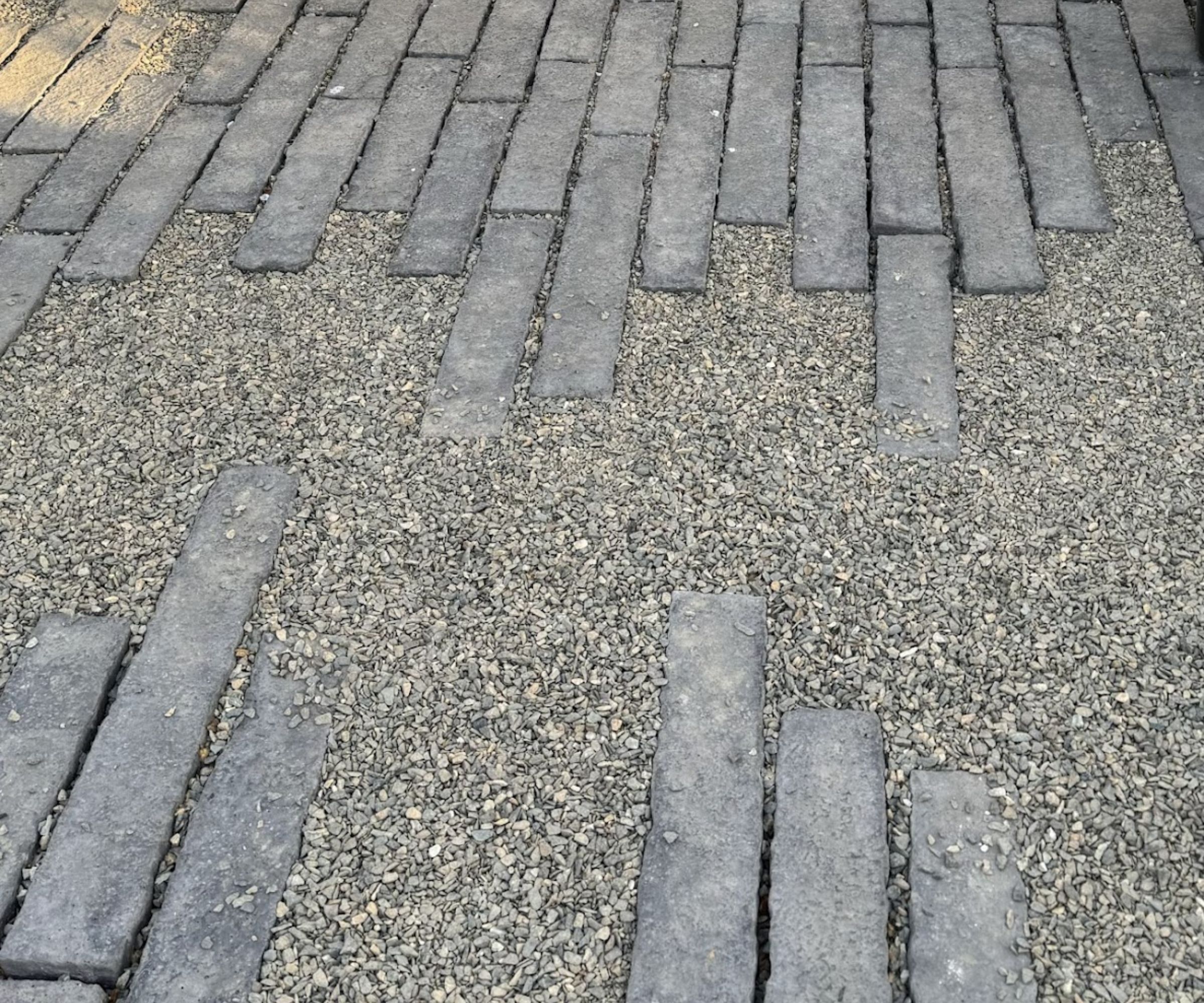
(Image credit: Shireen Zia)
Be sure to research your patio materials before you start designing your minimalist garden.
'Neutral-tone gravel is my go-to foundation, often paired with clean, poured concrete or linear pavers, and bold, structural plant,' says Shireen Zia, who created the patio above using 'Yosemite Tan gravel and Castohn Bordo pavers [for] a seamless, monotone base'.
'It's a combo which offers warmth and structure for a clean, contemporary garden feel. Their soft tones enhance plant textures without overpowering the design,' she continues, advising people 'stay within a consistent hardscape color tone'.
'This, and using a monotone planting palette – punctuated by just one seasonal color – creates the calm, cohesive feel essential to a successful minimalist garden,' she promises.

Shireen is an award-winning garden designer and principal of EcoGardensLandscape Design, LLC.
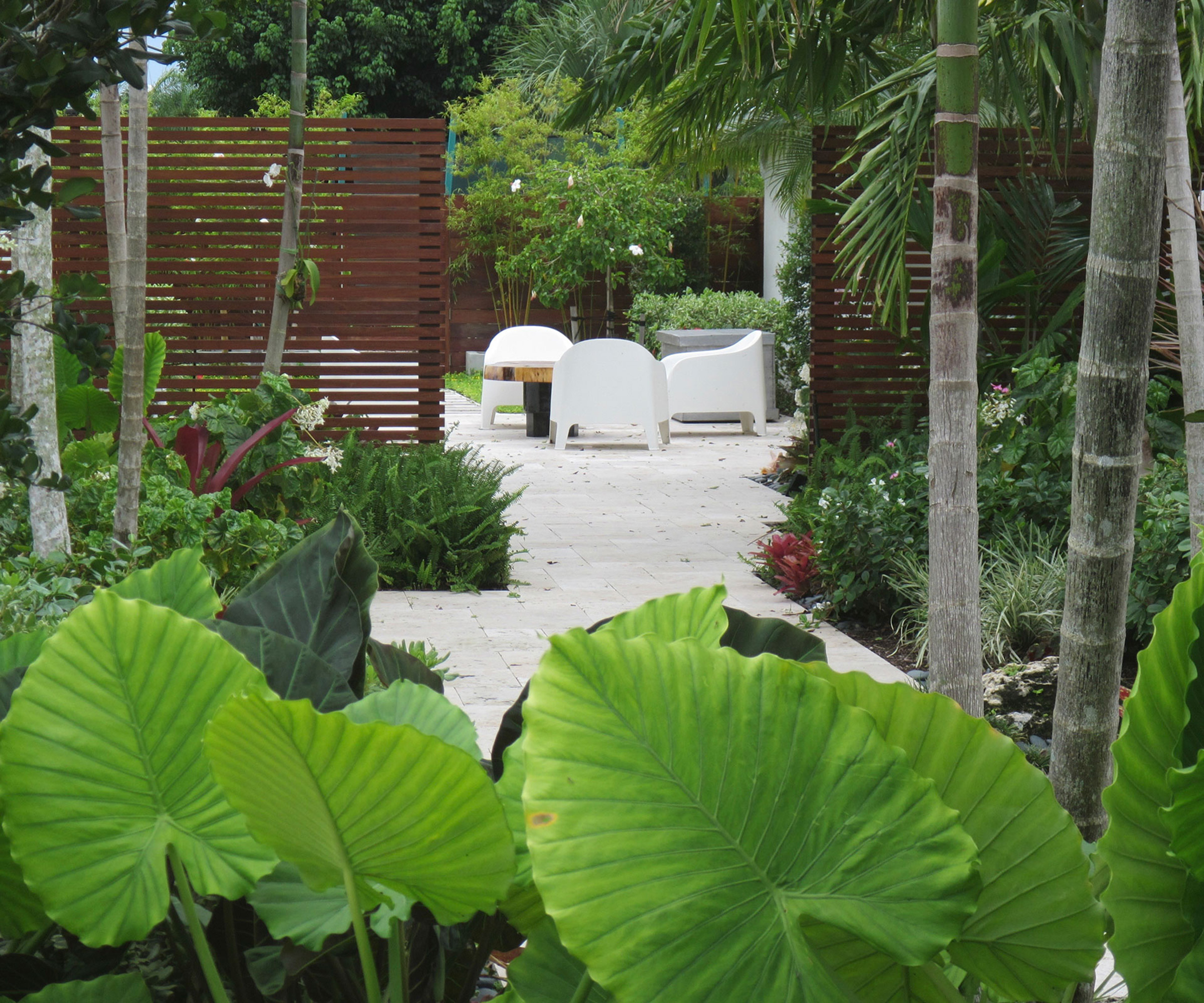
(Image credit: Matthew Giampietro)
Based on what we've learned so far, it makes sense that one of the easiest ways to design a minimalist garden is to get repetitive.
'Often, a minimalist look can be achieved through the use of repetition in the garden. For instance, consider lining a pathway with a striking row of neatly pruned boxwoods or Japanese hollies. If you’re looking to give a garden bed a minimalist look, you might 'flood' the bed with a single-variety planting that offers rich textural interest like ‘Soft Caress’ Mahonia,' says Linda.
'With its soft, feather-like foliage and bright wintertime flowers, it’s dynamic enough to offer richness and complexity when viewed up close, while lending elegant simplicity from afar.'
Explore boxwood bushes at Nature Hills to add to your borders.

Linda is a self-taught garden designer, stylist, and content creator who views all of life through a gardening lens. The founder of a popular YouTube channel dedicated to gardening, Linda is also the author of several books, including her latest publication: The Garden Journal: A 5-Year Record Of Your Home Garden.
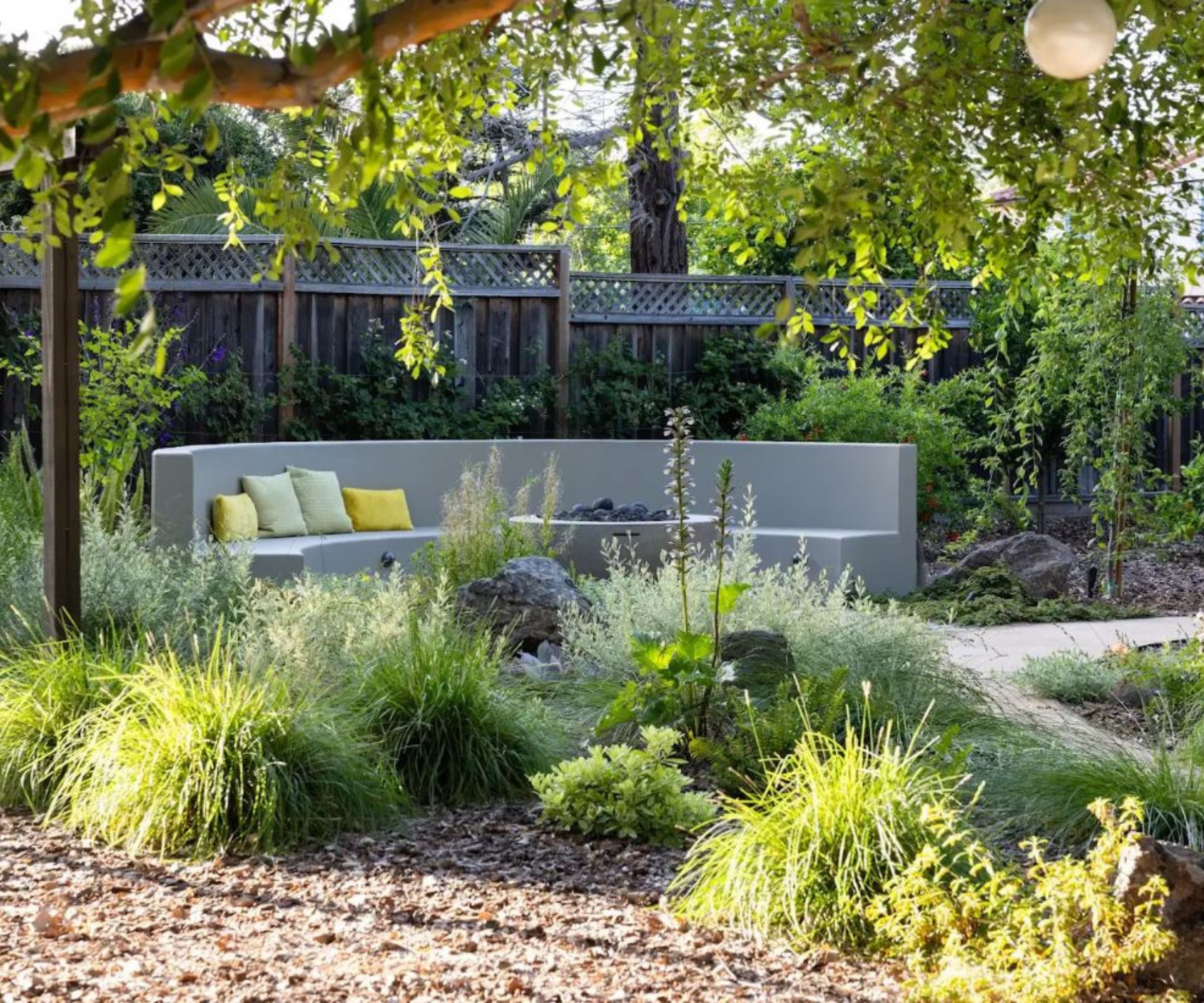
(Image credit: Linda Peters)
If you're figuring out how to design a minimalist garden, take care to include some comfortable (yet functional) outdoor seating ideas.
The garden above, which was lovingly designed by Shireen, features 'a sculptural seat-wall that anchors the space as a functional focal point, framed by a muted plant palette of soft textures and subdued hues – embodying the quiet strength of minimalist design'.
'Including one or two stone hardscape features, such as a birdbath (like this one from Amazon) or a bench, can provide a focal point and tie the garden together,' says Alexander Betz.
'Consider using a planting guide like Plant By Number’s Birdbath Garden Map to simplify the planning process!'
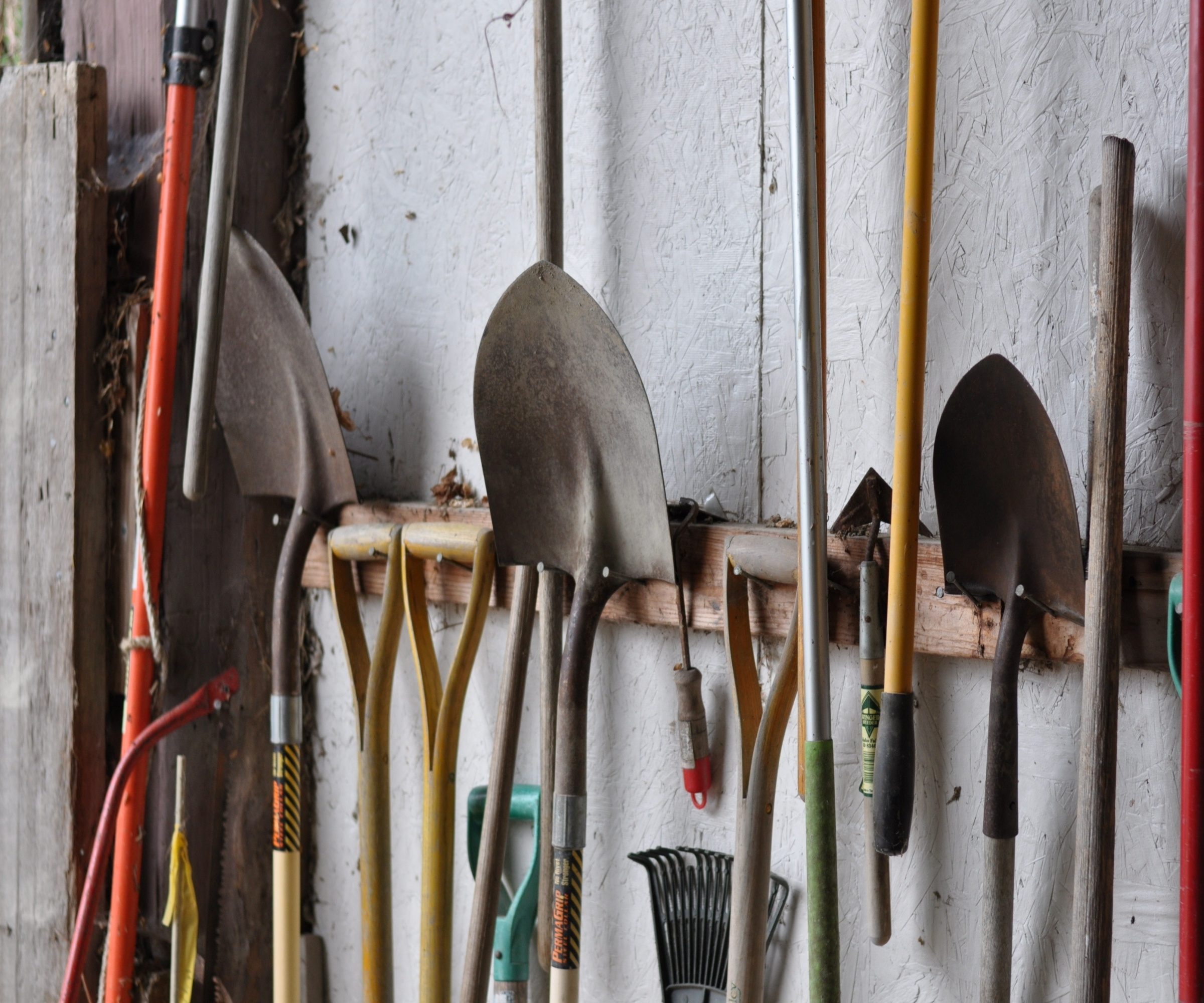
(Image credit: Shutterstock/CKL_Photos)
It may not be the most glamorous part of learning how to design a minimalist garden, but it really is important to consider where you will store all of your tools and clutter.
'Maintaining a minimalist look can also come from hiding as many tools and garden accessories as possible,' explains Alexander.
'Store garden tools in the garage, conceal visible hoses, and keep the garden tidy by regularly getting rid of weeds and pruning. Avoid the temptation to overplant to ensure a clean and uncluttered space.'
There are lots of possibilities when it comes to storage ideas for sheds, like using this outdoor storage unit from Amazon, so you can keep your tools packed away neatly and organized.
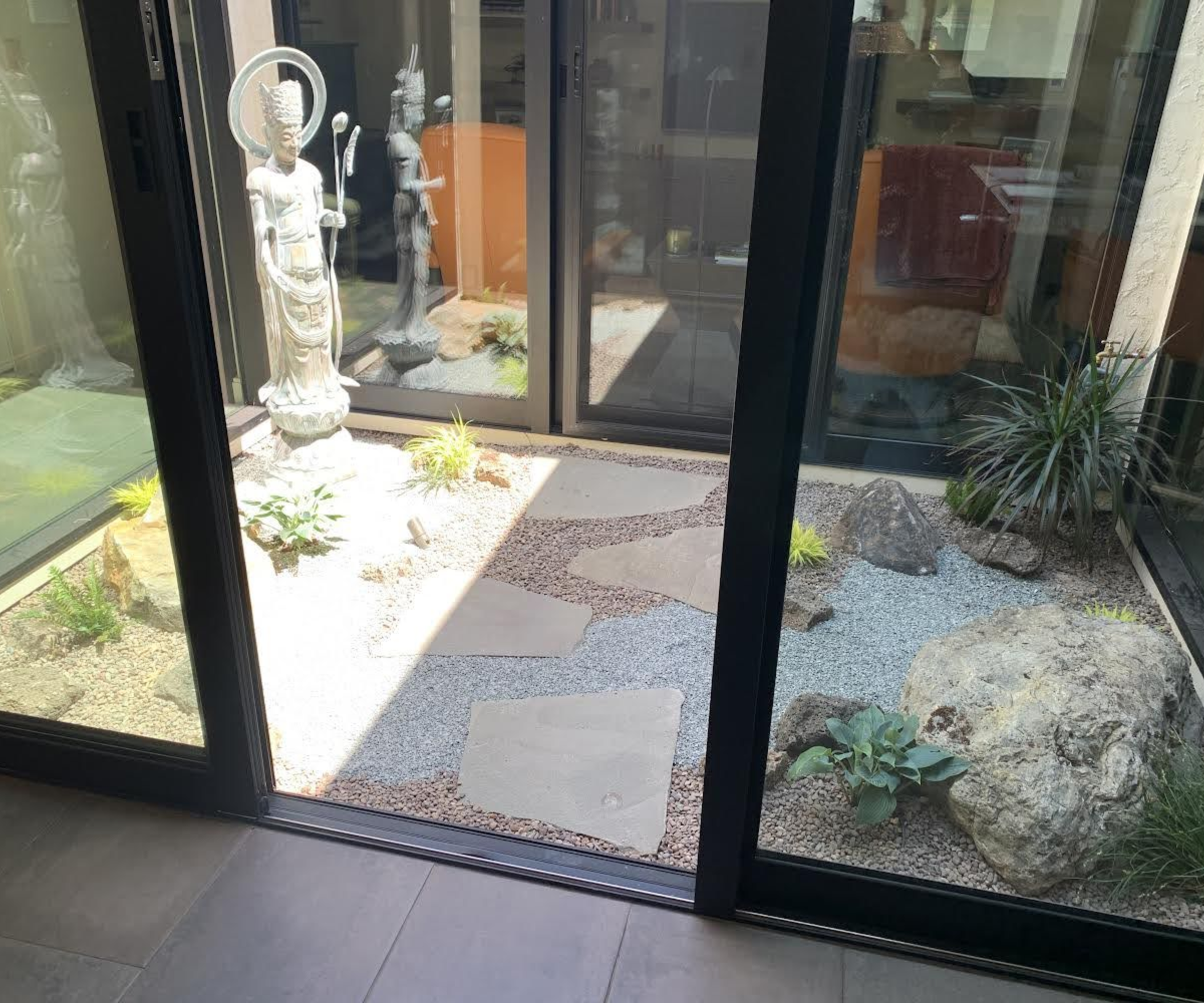
(Image credit: Shireen Zia)
You don't need lots of space to design a minimalist garden; even a small atrium will do, as Shireen's design above makes clear.
'This tiny atrium reflects a minimalist and Zen-inspired design, crafted with five thoughtfully chosen hardscape materials and a mass planting of five varieties to create a calm, cohesive retreat,' she says.
Create a minimalist garden within your backyard for a corner to escape to. Adding seating like this bench from Walmart can turn it into a quiet retreat.
'Some plant options for achieving a minimalist style garden are grasses that have soft movement, such as carex and miscanthus, sculptural plants, like clipped topiary spheres, and low-maintenance ground covers, such as thyme, dichondra, or blue star creeper,' says Alexander Betz of Plant by Number.
Professional gardener and author Ellen Mary Webster agrees, suggesting 'lavender, shrub roses and box hedging' as good options, along with Japanese maple.
And garden design expert Linda Vater says to look for 'simple shapes, like the strappy, blade-like leaves on Clarity Blue™ Dianella or the grass-like Platinum Beauty® Lomandra' if you want a clean, minimalist look.
'The clumping habit on these two varieties gives structure to a minimalist garden when planted in rows, used in borders, or placed as a solo planting in elegant urns and containers,' she adds.
According to award-winning garden designer Shireen Zia, the most common mistake when designing a minimalist garden is 'overcomplicating the palette or mixing too many textures, whether in hardscape materials or plant choices'.
'Choosing high-maintenance trees or shrubs can also disrupt the minimalist intent. Simplicity takes discipline, and in these spaces, less truly is more,' she stresses.
While it is worth investigating 'xeriscaping' and planning a dry garden to ensure you are planting appropriately for your local climate, there are so many things to consider when learning how to design a minimalist garden.
Essentially, though, the secret is to focus on 'clean lines, simple forms, and a restrained plant palette,' says Shireen.
Keep those principles in mind, and you’ll be well on your way to creating a garden that’s both effortlessly stylish and beautifully low-maintenance.








:max_bytes(150000):strip_icc():focal(728x405:730x407)/Scarlett-Johansson-Tina-Fey-Drew-Barrymore-051825-846b89230b8841a8bf8d056ac7de3fcd.jpg)

